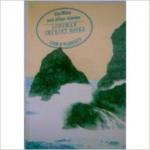|
This section contains 352 words (approx. 1 page at 400 words per page) |

|
The Wave Summary & Study Guide Description
The Wave Summary & Study Guide includes comprehensive information and analysis to help you understand the book. This study guide contains the following sections:
This detailed literature summary also contains Bibliography on The Wave by Liam O'Flaherty.
This story was included in a collection of early stories titled Spring Sowing. When O'Flaherty's friend and mentor, the critic Edward Garnett, told him to write about those things with which he was familiar, he naturally turned to the scene of his childhood: the bleak Aran Islands. Many of his stories are graphic descriptions of the peasant life on these nearly barren rocks, as human beings grapple with the unforgiving elements of nature. There are also stories, nine of them in this collection, that have to do with animals and their treatment by human beings. In "The Wave," however, there are neither human nor animal characters, but one part of nature against another.
Liam O'Flaherty became famous because of his novels, especially Famine and The Informer, but his literary reputation rests more heavily upon his short stories. Frank O'Connor, another great Irish short story writer, says in his book A Short History of Irish Literature that "the great O'Flaherty of the short stories is a man without ideals or opinions, concerned only with the 'facts."' "The Wave" is little more, at least on the surface, than a recitation of facts by a seemingly objective reporter. At high tide, small, disconnected waves are replaced by a giant wave that destroys a weakened cliff. There is little here on the surface that would lead us to grand conclusions about life or "universal truths."
Yet, if we look at the descriptive prose, we see an artist at work. The story begins with a description of the cliff, static and unmoving. It continues with a description of the sea just before high tide, violent and roiling. It ends with a description of the sea at high tide, and the single, united wave that comes crashing in, destroying the cliff. There is room for the reader to maneuver within this story. Is it the wave or the cliff that should be read as the protagonist? Is it destruction, or a natural restructuring? O'Flaherty's stories do not propose answers but, as Anton Chekhov has said is the purpose of stories, they state the question correctly.
Read more from the Study Guide
|
This section contains 352 words (approx. 1 page at 400 words per page) |

|



